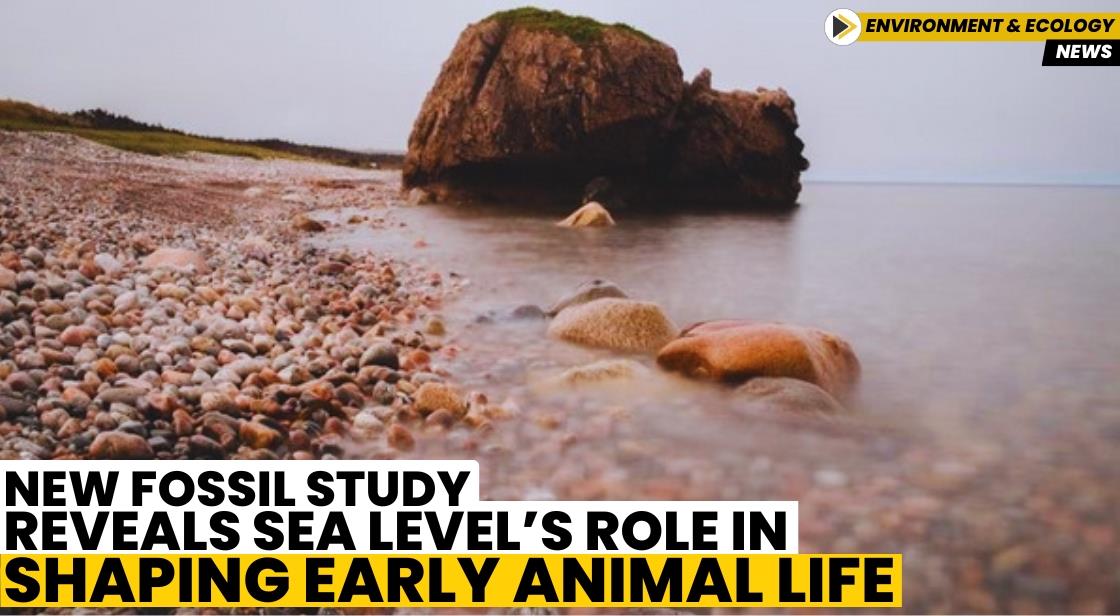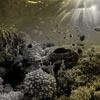New Fossil Study Reveals Sea Level’s Role in Shaping Early Animal Life

News Synopsis
Researchers from the University of Edinburgh have shed light on a long-standing mystery: how early animal life on Earth evolved. Their groundbreaking study, published in a recent scientific journal (source to be added upon publication), reveals a fascinating link between fluctuations in sea level, variations in ocean oxygen levels, and the emergence of the very first ancestors of all modern animal species.
A Dive into the Ediacaran-Cambrian Period (580-510 Million Years Ago)
The research team focused on a specific period in Earth's history known as the Ediacaran-Cambrian interval, spanning roughly 580 to 510 million years ago. This era witnessed a dramatic increase in the diversity of life forms, as documented in the fossil record.
However, the reasons behind this "explosion of biodiversity" remained a puzzle that had perplexed scientists since Charles Darwin's time.
Understanding the Early Inhabitants of the Oceans
The early animal life of this period was entirely aquatic, existing in a world with significantly lower oxygen levels in both the atmosphere and the oceans compared to today. While single-celled organisms and simple multicellular creatures dominated the earlier periods, the Ediacaran era saw the rise of more complex life forms.
These creatures boasted multiple cells arranged into specialized body plans, allowing them to perform essential functions like feeding, reproduction, and movement across the ocean floor.
This period also marked the emergence of bilaterian animals, characterized by symmetrical body plans – a feature shared by most present-day animals, including humans.
Unveiling the Connection: Sea Level, Oxygen, and Biodiversity
The researchers' key innovation involved meticulously combining data from various sources. They incorporated radioactive dating techniques to pinpoint the age of rock formations and utilized geochemical analysis to understand the chemical composition of the rock layers where fossils were discovered. This approach allowed them to map all significant fossil discoveries and environmental data onto a single, comprehensive timeline.
This novel chronology offered a more detailed view of biodiversity trends during the Ediacaran-Cambrian period. By analyzing this data alongside additional chemical clues preserved in the geological record, they uncovered a compelling connection: major shifts in global sea levels coincided with periods of increased oxygen levels in shallow marine environments. This dynamic, in turn, facilitated the appearance and diversification of early animal groups.
Setting the Stage for Life's Big Bangs
This intricate interplay between sea level, oxygen levels, and animal evolution had a profound impact on the development of life on Earth. It paved the way for several significant bursts in biodiversity, referred to as the Avalon, White Sea, and Cambrian assemblages. Each of these events marked the arrival of new animal groups and the decline of others, highlighting the dynamic nature of early animal evolution.
Gaps in the Fossil Record: A Call for Further Exploration
The study also highlighted gaps in the existing fossil record, suggesting that current knowledge about early animals may be skewed. These gaps likely stem from the clustering of research efforts in specific fossil-rich locations around the globe.
Dr. Fred Bowyer of the University of Edinburgh's School of Geosciences emphasized the importance of international collaboration: "Constructing a timeline of early animal evolution using the rock record is a daunting task, only made possible through international and interdisciplinary research. This integrated global approach is crucial because it helps expose biases in our records while simultaneously revealing patterns in fossil appearances, sea level cycles, and environmental oxygen."
Mariana Yilales Agelvis, a PhD student in the School of Geosciences who co-authored the study, shared her enthusiasm: "Knowing what drives biodiversity is a fundamental piece of knowledge in the puzzle of life. I feel very privileged to have built upon decades of interdisciplinary global research and contributed to a better understanding of the role that sea level plays in early animal evolution."
Conclusion
The recent study by the University of Edinburgh has made significant strides in understanding how fluctuations in sea levels and variations in marine oxygen levels shaped early animal life on Earth. By creating a detailed timeline of fossils from the Ediacaran-Cambrian period, researchers have linked these environmental changes to key evolutionary events in the history of early animals.
The Ediacaran-Cambrian interval was a time of remarkable biological diversification, and this study has illuminated how shifts in sea levels and oxygen availability contributed to this explosion of life. The emergence of bilaterian animals with symmetrical body plans marks a critical point in the evolution of complex life forms, setting the stage for the development of present-day species, including humans.
By integrating fossil data with environmental factors, the research has provided new insights into the ancient conditions that influenced the development and diversification of early animals. The identification of gaps in the fossil record also underscores the importance of a comprehensive global approach to understanding early life.
Dr. Fred Bowyer and Mariana Yilales Agelvis highlight the importance of interdisciplinary and international collaboration in uncovering the patterns and forces that shaped early evolution. Their work not only enriches our knowledge of ancient life but also underscores the ongoing need for further research to fill in the gaps and refine our understanding of early biodiversity.
This study contributes to a broader understanding of the forces driving early life on Earth, offering valuable insights into the dynamic interactions between environmental conditions and evolutionary processes.
You May Like









